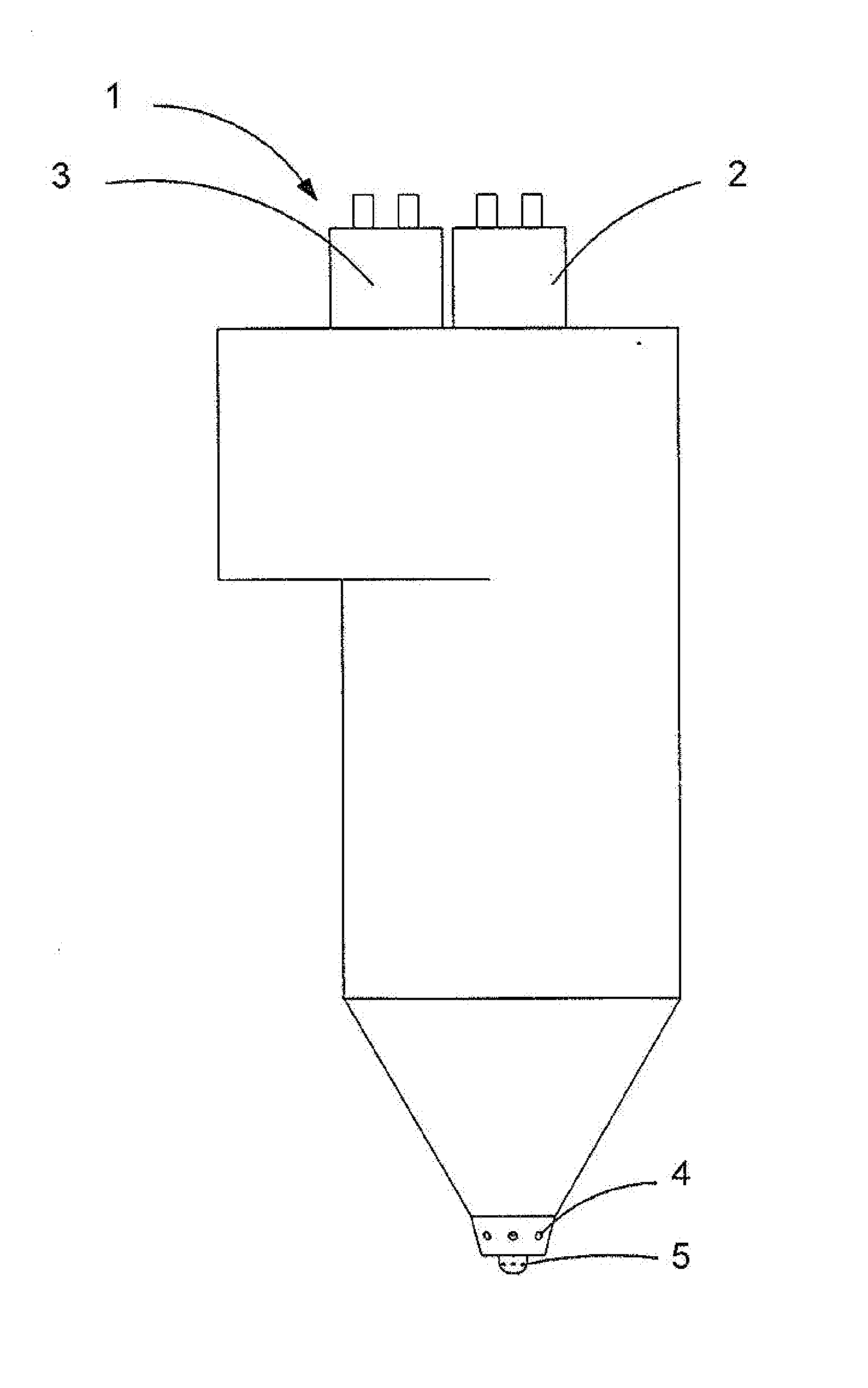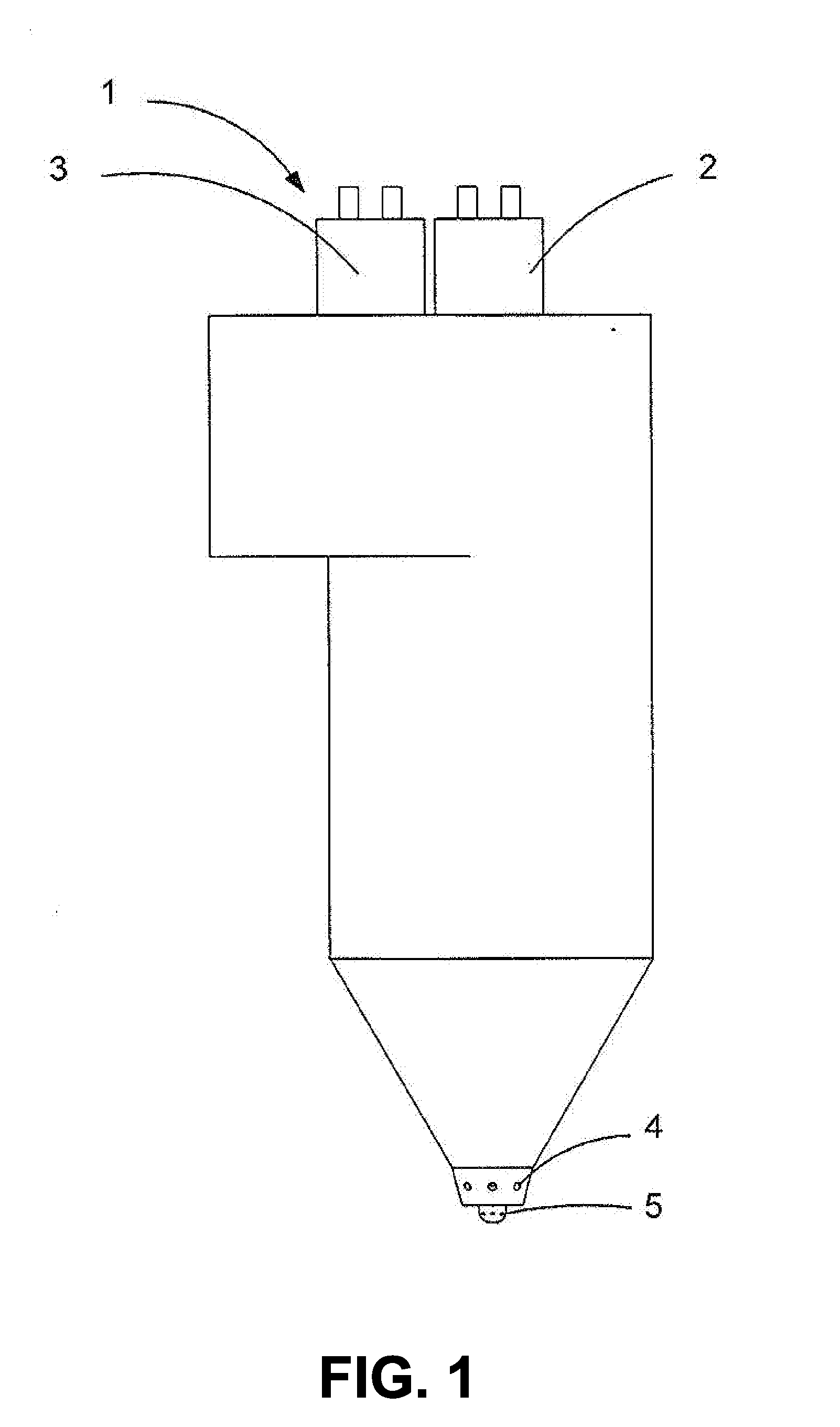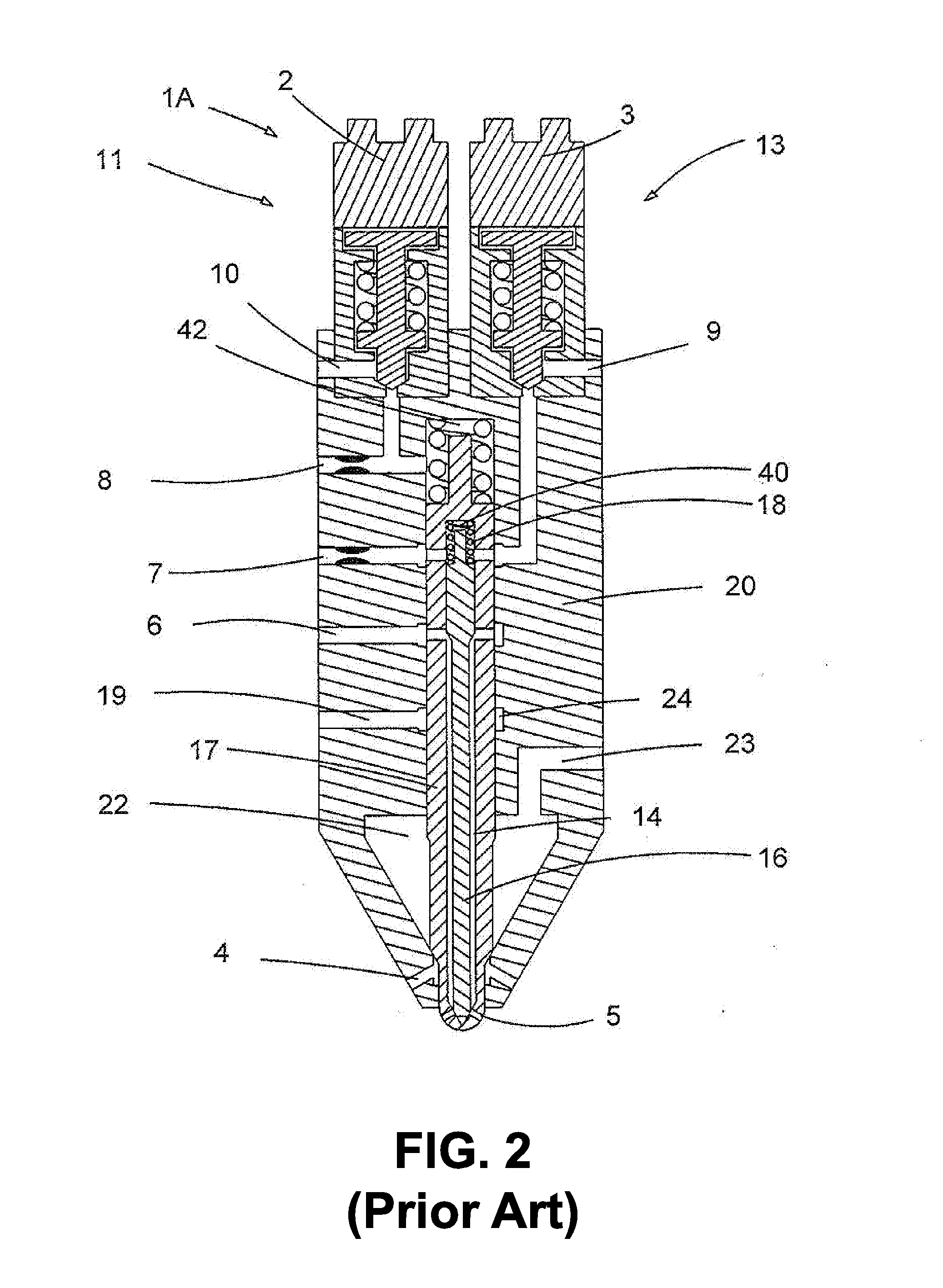Dual Fuel Injection Valve
a fuel injection valve and dual technology, applied in the direction of engines, mechanical equipment, machines/engines, etc., can solve the problems of limiting the amount of diesel that can be substituted with natural gas and/or the compression ratio, the pre-mixed homogeneous mixture of natural gas and air becomes too lean to burn, and the engine that introduces natural gas by fumigation cannot match the power, performance and efficiency of equivalently-sized diesel engines
- Summary
- Abstract
- Description
- Claims
- Application Information
AI Technical Summary
Benefits of technology
Problems solved by technology
Method used
Image
Examples
Embodiment Construction
)
[0053]The disclosed dual fuel injection valve is capable of independently and separately injecting two different fuels into the combustion chamber of an internal combustion engine. Each of the two fuels is injected into the combustion chamber through separate orifices that communicate directly to the combustion chamber. The dual fuel injection valve can provide independent control of the injection timing and fuel quantity for each of the two fuels. A first fuel can be a gaseous fuel and a second fuel can be a pilot fuel, preferably a liquid fuel that will auto-ignite in a compression ignition engine more readily than the gaseous fuel. The injection of the two fuels can be controlled such that, for example, at least some of the gaseous fuel is injected into the combustion chamber sequentially after the liquid fuel. Preferably, the gaseous fuel comprises more than 90% of the fuel consumed by the engine measured on an energy basis.
[0054]In preferred embodiments, the gaseous fuel is na...
PUM
 Login to View More
Login to View More Abstract
Description
Claims
Application Information
 Login to View More
Login to View More - R&D
- Intellectual Property
- Life Sciences
- Materials
- Tech Scout
- Unparalleled Data Quality
- Higher Quality Content
- 60% Fewer Hallucinations
Browse by: Latest US Patents, China's latest patents, Technical Efficacy Thesaurus, Application Domain, Technology Topic, Popular Technical Reports.
© 2025 PatSnap. All rights reserved.Legal|Privacy policy|Modern Slavery Act Transparency Statement|Sitemap|About US| Contact US: help@patsnap.com



